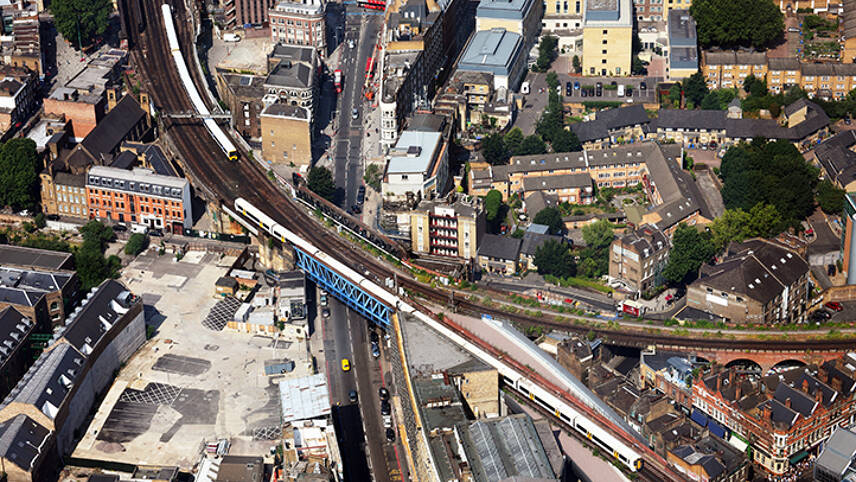Register for free and continue reading
Join our growing army of changemakers and get unlimited access to our premium content

Network Rail aims to improve day-to-day railway performance by building climate resiliency.
The transport body, an arms-length faction of the UK Government, has announced today (3 April) that it will allocate approximately £2.8bn from the funding pool towards activities and technological advancements aimed at enhancing resilience to extreme weather conditions and climate change impacts over the next five years.
Network Rail is funded in five-year chunks, called control periods, with the current period, CP7 running from 1 April 2024 to 31 March 2029.
During CP7, the firm’s revenue will be sourced from various channels, including £29.8bn in grants from the governments of England & Wales and Scotland, £13.8bn from track access charges paid by train operators and £1.7bn from commercial income.
Network Rail’s chief executive Andrew Haines said: “Climate change is the biggest challenge our railway faces. The extreme weather of the past year that has seen an unprecedented 14 named storms, has taken its toll on our railway – with experts predicting more of the same to come.
“We are responding to that challenge with a huge investment in making our railway more resilient and better performing for rail users during such events. We can never completely ‘weatherproof’ our railway, but we can be better prepared.”
Resilience and recovery
As part of its rail improvement plan, Network Rail will increase investment in maintaining drains, cuttings and embankments to make them more resilient to weather. It will also recruit almost 400 extra drainage engineers to handle increased rainfall.
Moreover, hundreds of key operational staff will undergo training in Network Rail’s new ‘weather academy’ to interpret forecasts and make better operation decisions during storms.
Additionally, more than 600,000 meters of drains will be built or rebuilt to handle heavier rainfall and reduce flooding.
Network Rail will also install more ‘smart’ movement sensors to detect changes in cuttings and embankments, CCTV at high-risk flooding sites and new technology to predict windspeeds and real-time rainfall forecasting to manage train services better.
Besides climate resilience, Network Rail aims to improve day-to-day railway performance by reducing external factors’ impact, infrastructure failures, enhancing workforce capability, optimising timetables and expediting incident recovery processes.
Rail Minister Huw Merriman said: “Our railways are at the heart of many people’s daily lives and getting us to where we need to be.
“That’s why the network must be fit for the future, with the resilience to handle extreme weather while offering the reliability and level of service our passengers deserve. I am confident the plan set out by Network Rail today will help keep our railways on track for the coming years.”
A recent survey of more than 2,000 adults found that most believe those reliant on public transport are getting a bad deal out of the existing transport system in the UK, due to issues such as high fares and unreliable services.


Please login or Register to leave a comment.